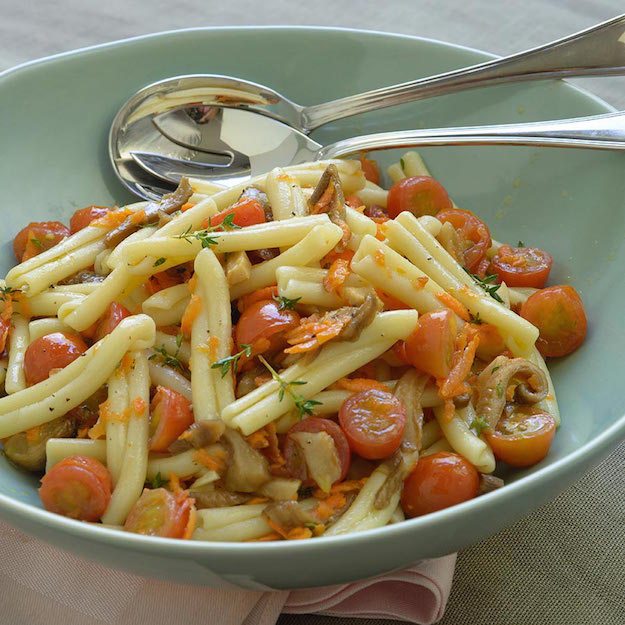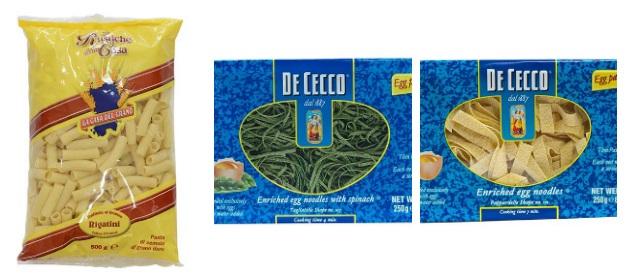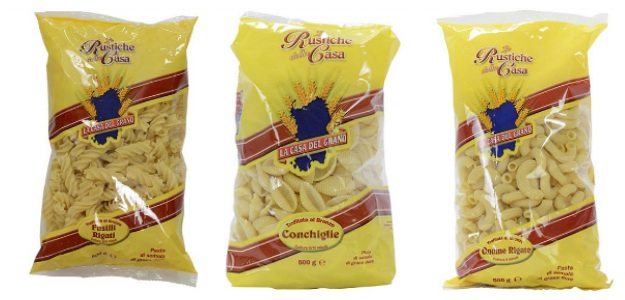A bowl of creamy noodles smothered in pomodoro, clusters of stumpy penne with shavings of Parmigiano…making pasta is one of the weekly rituals of modern cooking. It’s the ultimate comfort food, hearty, always delicious and easy to make. Boil the water, toss in the salt, cook the pasta and drain, and serve. What could be simpler?
As it turns out, it’s not as easy as it seems. Ask the Italians, for whom pasta is not weekly ritual, but a daily one. They know what they’re talking about, so here are the secrets on how to make the perfect pasta, just like they do it in Italy.

Lots of Water In a Big Pot = Great Pasta
The rule of thumb is 1 liter of water per 100 grams of pasta. Since you’re probably making closer to 1 pound of pasta, an easy way to remember it is: 1 lb. of pasta = slightly over 5 quarts of water. That’s probably much more than what you’re using now. So much water means you’ll need your biggest pot for making pasta. The reasoning behind what may seem an exaggerated amount of water is that pasta needs to be able to move around as it cooks, not be pushed together. That way it won’t stick either to the pan or each other, and won’t become too starchy.
Salt like the sea…
Salting is a key step on how to cook the perfect pasta. Are you adding a sprinkle of salt to your pot of pasta? That’s another common mistake. Another rule: 10 grams of salt per 100 grams of pasta. There’s a saying that pasta water should taste like the ocean, that’s how salty it should be. Salt makes the pasta cook evenly, and it prevents the pasta from becoming slimy. Are you worried about too much salt in your diet? Nothing to worry about: most of the salt stays in the water, which literally goes down the drain, not on the pasta. But the flavor sticks, which is what’s important. What type of salt should you use for pasta water? It doesn't really matter, it can be coarse salt, sea salt, or salt flakes. It's the quantity that matters.
Buy the best salt for your pasta! Discover our selection of gourmet salt >
….but only when boiling
One of the essential pasta cooking tips is to add the salt once the water has boiled, and not before. Simply because salting the water makes it take longer to boil. It also protects your pots from pitting, which is caused when the salt interacts with the water and the metal of the pots; adding the salt to boiling water cuts that process.
Toss into the pot…and stir.
Add the pasta all at once – not in batches – so it will all cook evenly. Stir for the first minute or two with a wooden spoon to make sure all the strands, noodles or shapes are not sticking to each other or the pot, and leave it be.
Cook.
Here is where there are variations when it comes to pasta cooking tips. Different pasta shapes will cook at different rates. Super thin Angel hair pasta or Capellini will cook very fast, while thicker or twisted shapes like corkscrew shaped fusilli or Conchiglie (shaped like an ear) will take over 10 minutes. Always follow the directions of the manufacturer.


Taste. And then taste some more.
Don’t cry over overcooked pasta! To make sure you get the perfect texture, start tasting two minutes before the directions indicate. Pasta should cook al dente, which means firm to the bite. Not chewy, not hard, not pasty or chalky. Perfectly firm and delicious.
Perfect Pasta Pairings
How do you decide which pasta goes with which sauce? Different sauces work best with different shapes of pasta. A universal rule: a simple sauce like fresh tomato sauce made from San Marzano tomatoes or a decadent butter sauce from gourmet butter like Beurremont's Butter Logs WIth Fleur de Sel de Guerande will work with almost every type of pasta. And a simple drizzle of fine extra virgin olive oil and a generous grating of authentic Parmigiano Reggiano is perfection. Follow some rules of shapes: short, chunky pasta will usually pair with short, chunky vegetables or pieces of meat. But also, break the rules when you want, and think of regional and seasonal flavors. Here are some tips for perfectly matching your pasta to your sauce.
Long and thin shapes like Spaghetti, Linguini, vermicelli PAIR WITH: cream or oil based sauces.
Ribbons like tagliatelle, pappardelle, fettuccine PAIR WELL WITH: olive oil and cream sauces, rich, meat-based sauces.
Shells like conchiglie and orecchiette PAIR WELL WITH: heavy sauces that fill the hollows, like meat or cream based sauce.
Twisted shapes like fussili, caserecce, gemelli and gigli PAIR WELL WITH: light, smooth sauces that cling, like pesto.
Tubes like penne, rigatini, macaroni, ondine PAIR WELL WITH: hearty sauces with vegetables or meat, or creamy cheese sauces. Bolognese or ragu.
Craving some great pasta right now? Gourmet Food World has an amazing selection! Buy gourmet pasta online!
Now that you know how to make the perfect pasta, get started and check out our favorite pasta recipes below!